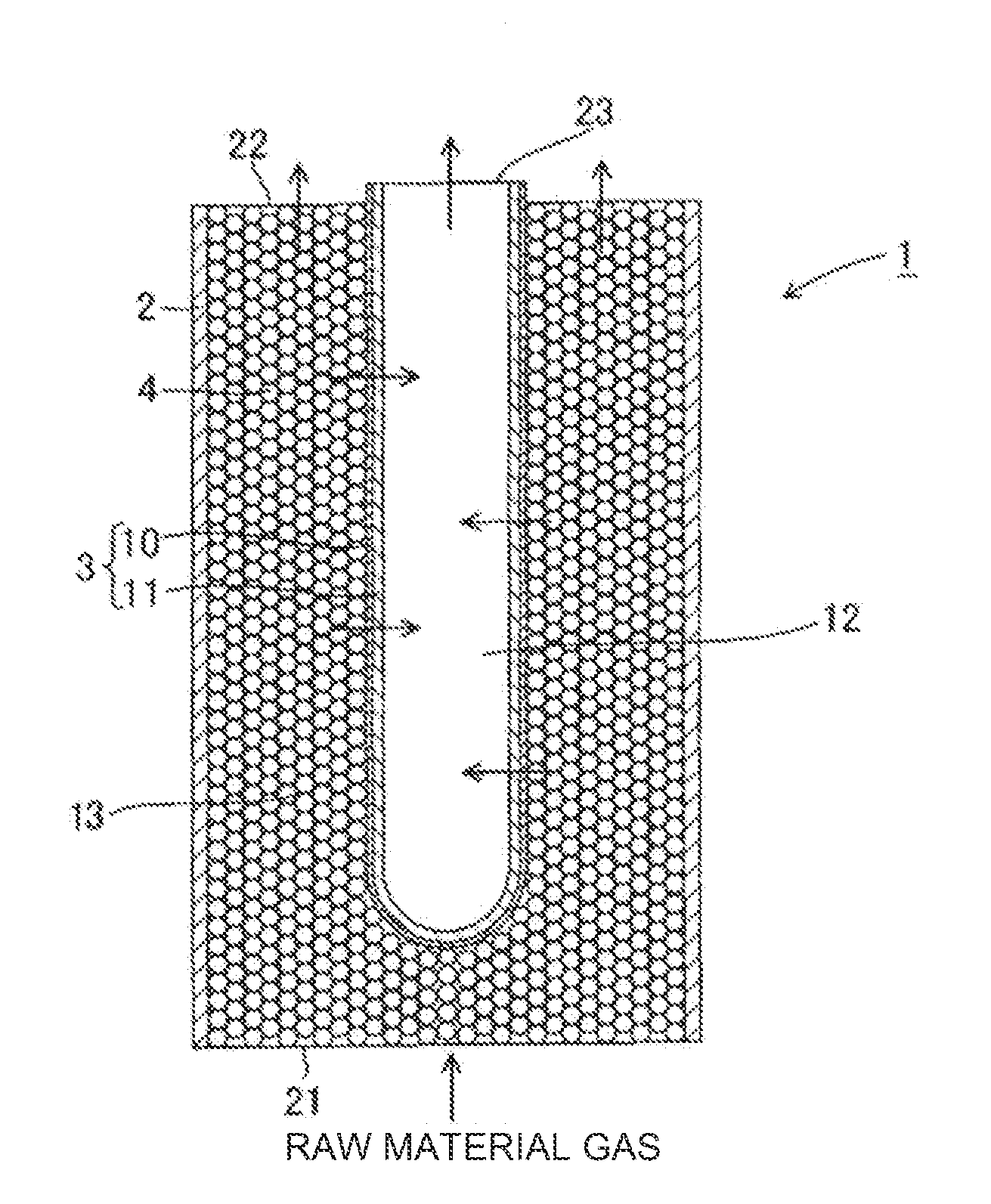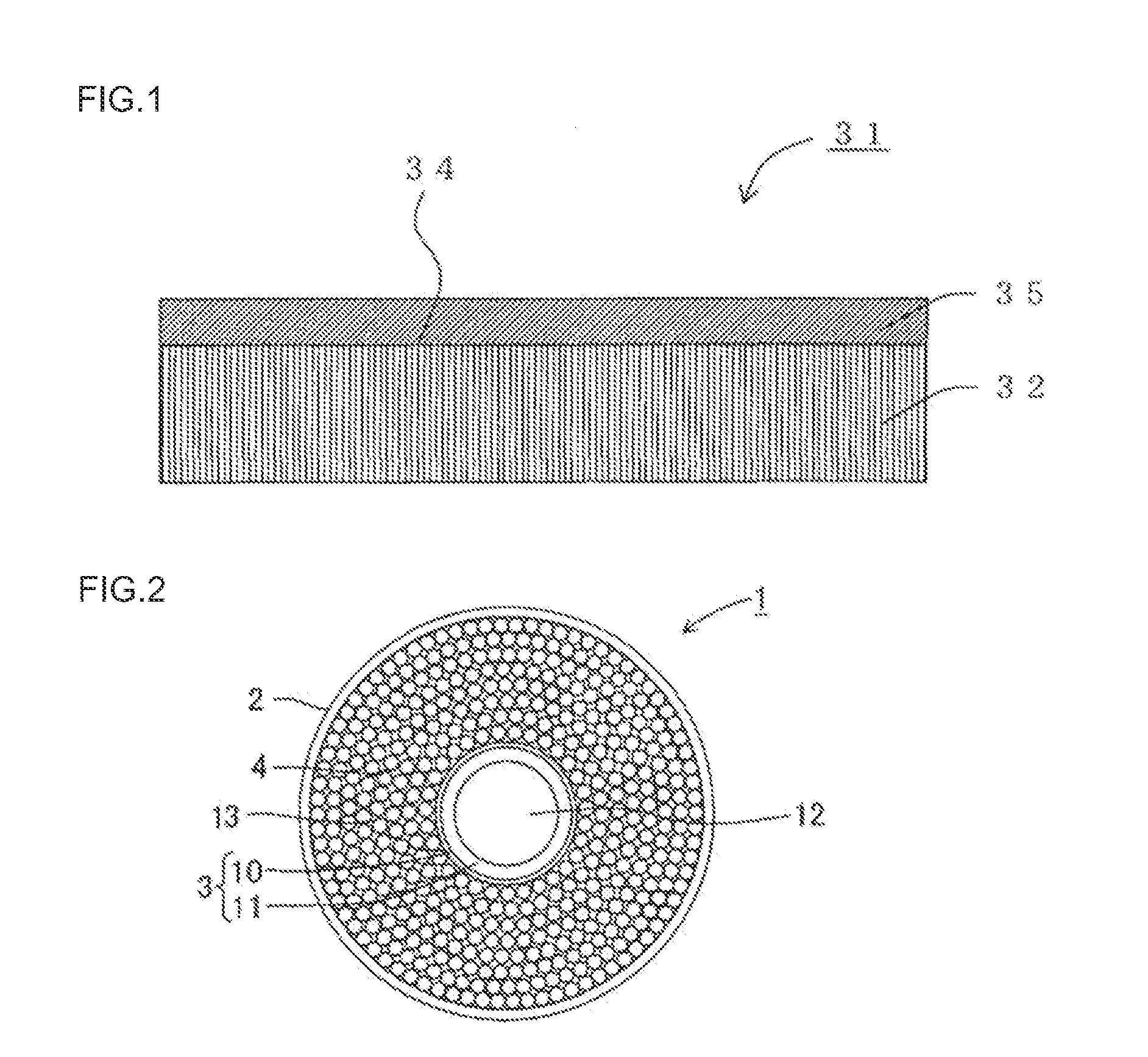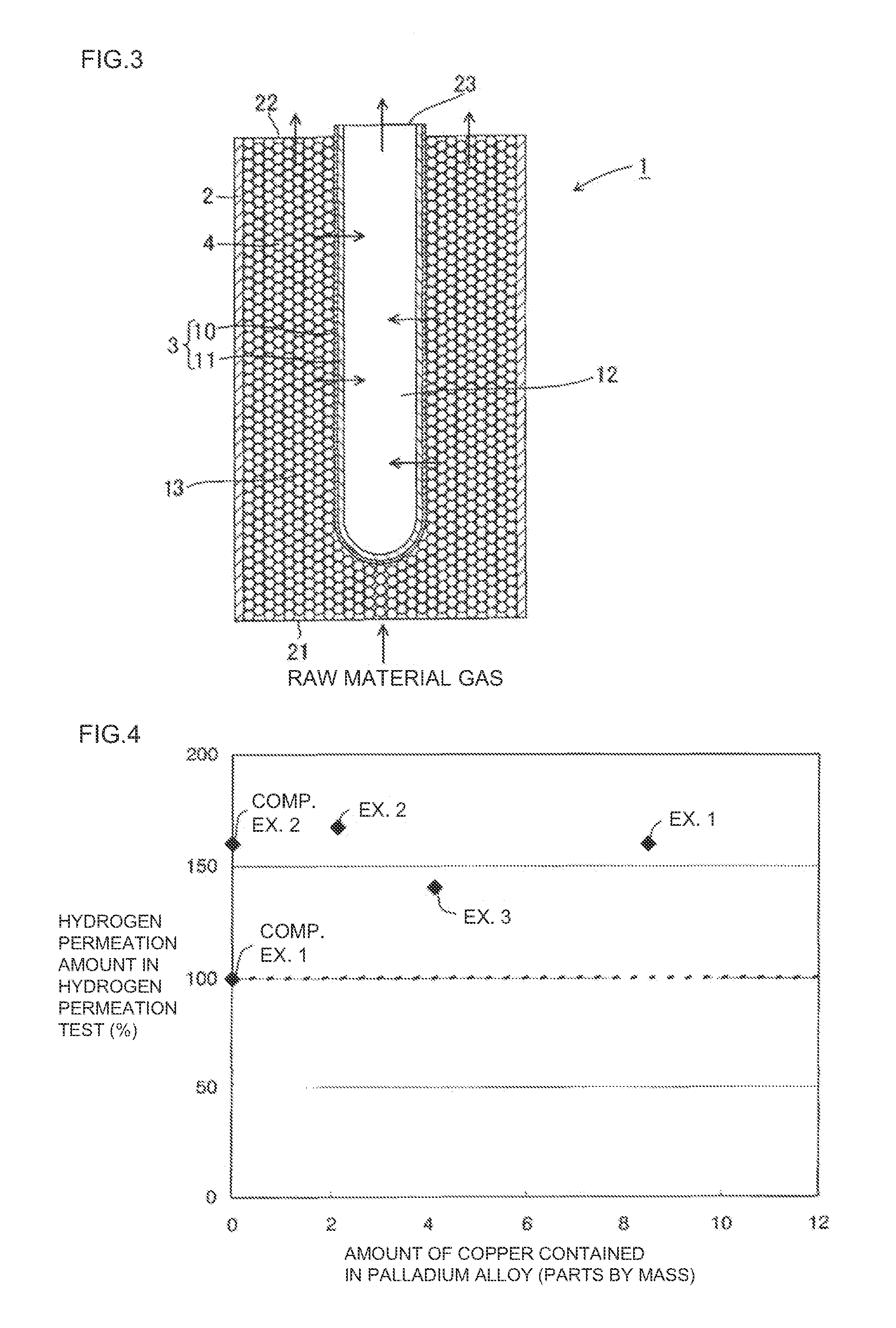Hydrogen separation membrane and permselective membrane reactor
a technology of hydrogen separation membrane and permselective membrane, which is applied in the direction of membranes, separation processes, physical/chemical process catalysts, etc., can solve the problems of poor durability of separation membrane, difficult to achieve excellent hydrogen permeability and durability at the same time, and achieve excellent hydrogen permeability and durability. , the effect of improving durability
- Summary
- Abstract
- Description
- Claims
- Application Information
AI Technical Summary
Benefits of technology
Problems solved by technology
Method used
Image
Examples
example 1
[0086]An α-alumina tube having a cylindrical shape (outer diameter: 10 mm, length: 100 mm, average surface pore size: 0.1 μm) was used as a substrate. Palladium, copper, and silver were sequentially deposited on the surface of the cylindrical substrate using a plating method to form a laminate. Palladium, copper, and silver were deposited so that the rate of silver was 25 parts by mass, and the rate of copper was 9 parts by mass with respect to 100 parts by mass of palladium. The resulting laminate was alloyed by heat treating at 700° C. for one hour in argon gas to obtain a hydrogen separation membrane formed of the palladium alloy. The thickness of the hydrogen separation membrane was 2 μm.
[0087]After sealing the ends of the cylindrical substrate on which the hydrogen separation membrane was disposed, the substrate was placed in a pressure-resistant container to obtain a hydrogen separator having the hydrogen separation membrane. The hydrogen separation membrane used for the hydro...
examples 2 and 3
[0090]A hydrogen separation membrane was formed in the same manner as in Example 1, except that the amount of copper forming the palladium alloy was changed as shown in Table 1. A hydrogen separator was produced using the resulting hydrogen separation membrane. The measurement results of the hydrogen permeation test are shown in Table 1.
examples 4 to 10
[0095]A hydrogen separation membrane was formed in the same manner as in Example 1, except that the ratio of the elements forming the palladium alloy was changed as shown in Table 3. A hydrogen separator was produced using the resulting hydrogen separation membrane. The measurement results of the hydrogen permeation test of Examples 2 and 4 to 10 are shown in Table 3.
TABLE 3Results ofhydrogenComposition of palladium alloypermeation(parts by mass)test (%)Example 2Palladium (100)silver (25)Copper (2)167Example 4Palladium (100)silver (25)Nickel (2)145Example 5Palladium (100)silver (25)Cobalt (2)140Example 6Palladium (100)silver (25)Iridium (2)150Example 7Palladium (100)silver (25)Rhodium (2)168Example 8Palladium (100)Gold (5)Cobalt (2)85Example 9Palladium (100)Gold (5)Iridium (2)96Example 10Palladium (100)Gold (5)Rhodium (2)95
(Results)
[0096]As shown in Table 1 and the graph of FIG. 4, the hydrogen separation membranes used for the hydrogen separators of Examples 1 to 3 exhibited excell...
PUM
| Property | Measurement | Unit |
|---|---|---|
| temperature | aaaaa | aaaaa |
| thickness | aaaaa | aaaaa |
| thickness | aaaaa | aaaaa |
Abstract
Description
Claims
Application Information
 Login to View More
Login to View More - R&D
- Intellectual Property
- Life Sciences
- Materials
- Tech Scout
- Unparalleled Data Quality
- Higher Quality Content
- 60% Fewer Hallucinations
Browse by: Latest US Patents, China's latest patents, Technical Efficacy Thesaurus, Application Domain, Technology Topic, Popular Technical Reports.
© 2025 PatSnap. All rights reserved.Legal|Privacy policy|Modern Slavery Act Transparency Statement|Sitemap|About US| Contact US: help@patsnap.com



